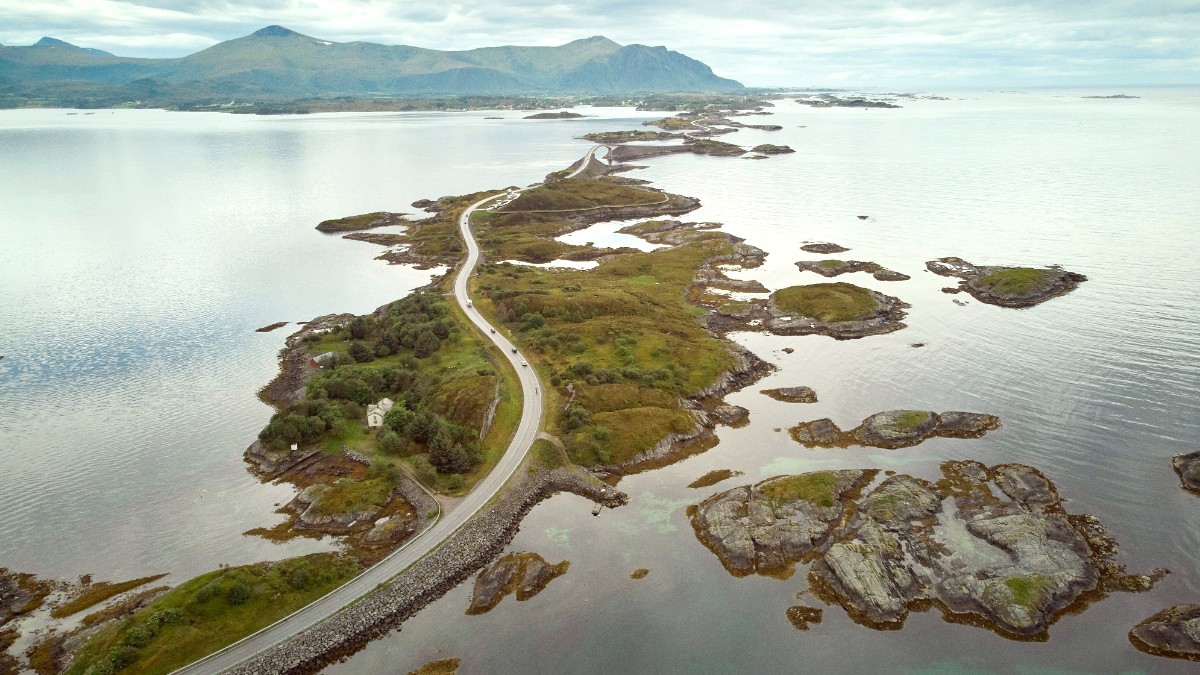
Bergen And The Western Fjords, Norway
Winter (December-February) temperatures range from -1°C to 4°C (30-39°F). Snowfall occurs regularly, especially inland. Coastal snow generally melts quickly due to milder temperatures. Precipitation remains high. Daylight hours are short, with unique dramatic light quality.
Spring (March-May) temperatures gradually rise, from 2°C to 10°C (36-50°F). Precipitation decreases, and the landscape transforms with blooming flora. Late spring, especially May, presents good weather for city exploration before peak tourist season.
High season (June-August): Warmest weather, longest daylight, full tourist activity. Prices for accommodation and tours are highest. Crowds are more common. Booking well in advance is advisable.
Shoulder season (May, September): Fewer crowds, lower prices. Temperatures remain pleasant. September presents beautiful autumn colors. Most activities remain available, allowing a full experience without summer crowds. Weather may be more unpredictable. Some attractions might begin reduced hours or close earlier in September.
Fewer tourists, colder weather
Lowest prices for accommodation and flights. Quiet, authentic experience. Opportunities for skiing in nearby mountain resorts (e.g., Stranda).
Cold temperatures, short daylight hours. Many outdoor activities and fjord tours are limited or unavailable. Increased chance of rain or snow.
Peak tourist period
Warmest weather, longest daylight, all attractions and activities operate at full capacity.
Highest prices, larger crowds, frequent cruise ship visits.
Balanced experience
Fewer crowds, lower prices. Pleasant temperatures. May and September offer autumn colors.
Weather can be more unpredictable. Some attractions might reduce hours.
June to August yield the best conditions for fjord cruising and hiking, with full tour schedules and clear trails.
May, June, and September present less crowded streets and good light for photography. Mild temperatures suit walking tours.
Optimal from June to August.
Best conditions from June to August.
Available from January to April at nearby resorts.
Enjoyable in May, June, and September.
Good light in May, June, and September.
Norway participates in the Schengen Area, a zone of 27 European countries that abolished passport and other border controls at their mutual borders.
This visa suits short stays, allowing visitors up to 90 days within any 180-day period. It covers tourism, business, or visiting family and friends.
Citizens of EU/EEA countries, the USA, Canada, Australia, New Zealand, the UK, and many other nations can enter Norway visa-free for up to 90 days within a 180-day period.
Immigration procedures align with the Schengen border control system. Upon arrival, border officers check your passport and may ask about your travel purpose, duration of stay, and accommodation. Come prepared to present your supporting documents if requested.
Norway is known for its high cost of living, and Ålesund is no exception. Careful budgeting secures a comfortable trip.
The currency in Norway is the Norwegian Krone (NOK), symbolized as kr. Banknotes come in denominations of 50, 100, 200, 500, and 1000 kr. Coins are available in 1, 5, 10, and 20 kr.
Credit and debit cards see wide acceptance throughout Norway, even for small purchases. Cash is rarely necessary. ATMs are available, but cash withdrawals incur fees from your bank and the ATM operator. Using a travel-friendly credit card with no foreign transaction fees is a good idea.
A daily budget from 900-1900 NOK. Accommodation in hostels/guesthouses, meals from supermarkets/fast food, local bus/walking transport, and free activities.
Lowest prices by cooking own meals and walking.
Eating out significantly raises costs.
A daily budget from 2100-4400 NOK. Mid-range hotels/apartments, restaurant meals, bus/taxi transport, and 1-2 paid activities per day.
Value found in hotels with breakfast and efficient public transport.
Taxi use adds up quickly.
A daily budget from 5000+ NOK. Boutique hotels/suites, fine dining, taxi/private transport, and numerous tours/excursions.
Access to premium experiences and private transport.
Expect high costs for exclusive services.
| Category | Description | Price Range (NOK) |
|---|---|---|
| Accommodation | Hostel dorm to luxury hotel double room | 500-2500+ per night |
| Meals | Supermarket sandwich to fine dining | 50-600+ per meal |
| Transportation | Single bus ticket to taxi ride | 40-600 |
Norway possesses a strong reputation for safety and high-quality public services. Ålesund remains a very safe place to visit, but knowledge of general health and safety practices remains important for any traveler.
No specific vaccinations are required. Routine vaccinations should be up-to-date. Consult your doctor or travel clinic for personalized advice.
Cold or flu, especially outside summer. Dress warmly. Ticks present in rural/wooded areas; check after outdoor activities. Sunburn risk; use high SPF protection.
A risk if hiking unprepared in changing mountain weather. Carry appropriate gear and inform someone of your route.
Norway features a very high standard of healthcare.
EU/EEA citizens with an European Health Insurance Card (EHIC) obtain state-provided healthcare at the same cost as a Norwegian citizen.
Non-EU/EEA citizens benefit from comprehensive travel insurance. This insurance should cover medical emergencies, emergency evacuation, and repatriation. Consider World Nomads, SafetyWing, or Insubuy.
Local Hospital: Ålesund Hospital (Ålesund sykehus) is the main medical facility.
Tap water in Ålesund and throughout Norway is safe and of excellent quality. Drink directly from the tap without concern.
Food hygiene standards are very high. Eat confidently from restaurants and food establishments.
Norway maintains a very low crime rate. Ålesund is generally a very safe town. Violent crime is rare. Petty crime is minimal, but awareness of belongings in crowded areas is prudent. No specific high-crime neighborhoods.
Be aware of potential natural hazards, especially when exploring mountainous or rural areas.
Travel insurance is highly recommended for all travelers to Norway. Your policy should cover medical emergencies, emergency evacuation, trip cancellation or interruption, and lost luggage.
Ensure coverage for medical emergencies and emergency evacuation. World Nomads caters to adventurous travelers.
Coverage for trip cancellation or interruption. SafetyWing provides digital nomad insurance.
Verify coverage for planned adventure activities like hiking or kayaking. Insubuy offers various coverage options.